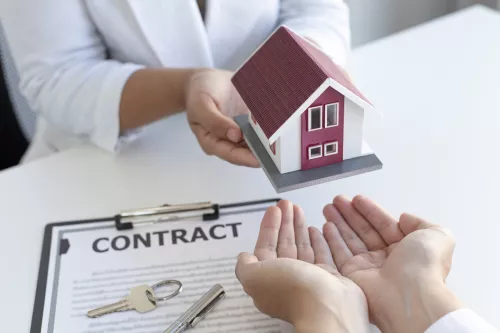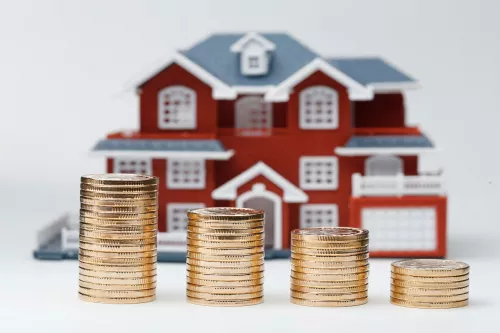Discovering your dream home can spark a desire for a quick transition to ownership, but the journey through the real estate landscape requires a blend of excitement and patience.
As you embark on this path, whether you're buying, selling, or refinancing, the appraisal process emerges as a pivotal piece of the puzzle, often resembling a labyrinth with its complex steps and jargon.
It's essential to understand that finalizing a property deal involves careful consideration from all sides. The buyer, seller, and lender (when financing comes into play) all aim to ensure that the transaction's terms are fair and every detail is meticulously examined. This thoroughness helps everyone involved feel confident and secure in the agreement.
Here, we aim to illuminate the appraisal process, offering insights into its importance and how it integrates into the broader context of a real estate transaction. We will discuss the essentials of appraisals, from their fundamental purpose to the mechanics of how they're conducted, and provide practical tips for preparing your home to be appraised, and much more.
What is an Appraisal?
An appraisal fundamentally serves as an unbiased, expert valuation of a property's worth, carried out by a neutral third party. It involves a thorough assessment of various aspects such as the property's condition, its location, size, and the prices of similar properties in the market.
The overarching aim is to establish a fair market value, which plays a critical role during the buying or selling process by ensuring that the property's sale price is in line with its true market value. This not only prevents buyers from paying more than what the property is worth but also safeguards mortgage lenders from issuing loans that exceed the property's value.
As the property is used as collateral for the loan, the accuracy of the appraisal is of paramount importance, ensuring that all parties involved are protected and the transaction is based on a fair assessment of the property's value.
How Does an Appraisal Work?

Upon receiving a request from a lender, a qualified appraiser either schedules an in-person visit or conducts the appraisal remotely. This evaluation involves a physical inspection of the property and an analysis of recent sales of similar nearby properties, known as "comps," using sources like the local MLS, tax records, and real estate agents.
The appraisal process also takes into account the property's neighborhood, with factors like the age of the home and the area's development influencing the appraisal value.
Here's what to expect during a home appraisal:
Appraisal Order
Your lender will request an appraisal once an offer on a home is accepted and the purchase agreement is signed, or after applying for a refinance.
Property Assessment
The appraiser either visits the home or performs a remote evaluation, with the time taken varying based on the property's size.
Market Analysis
The appraiser reviews comparable property sales and public records to gauge your home's market value.
Report Submission
The appraiser compiles their findings into a report, often the Uniform Residential Appraisal Report, and submits it to the lender. As the borrower, you'll receive a copy before closing and should review it for accuracy, raising any concerns with your lender.
How to Prepare for an Appraisal if I'm a seller, a buyer or a refinancer?

Getting ready for an appraisal is key to showcasing your property in its best light, potentially impacting its evaluated value. Here's how you can prepare to an appraisal if you are a seller:
Enhance Curb Appeal
Tidy Up
Start with a thorough cleanup of your yard. Mow the lawn, prune overgrown bushes, and remove any dead plants or weeds.
Add Color
Consider adding a few colorful flowers or decorative plants to make the entrance more inviting.
Maintenance
Check for any exterior maintenance issues, such as peeling paint or damaged siding, and address them promptly.
First impressions are crucial. A well-maintained exterior suggests a well-cared-for interior, setting a positive tone for the appraisal.
Make Necessary Repairs
Fix Leaks
Attend to any plumbing issues, from a dripping tap to a running toilet. Small problems can suggest larger, neglected issues to an appraiser.
Windows and Doors
Ensure all windows and doors open smoothly and fix any broken panes or faulty locks.
Electrical Fixes
Replace any non-working light bulbs and make sure all switches and outlets function properly.
Addressing these repairs can prevent an appraiser from making negative assumptions about the overall condition of your property.
Document Upgrades
List of Improvements
Compile a detailed list of all the updates you've made to the property, especially those not immediately visible, such as new roofing or updated HVAC systems.
Provide Receipts
If available, include receipts or documentation for major improvements to validate your claims.
Highlight Key Features
Don't forget to point out any high-value features like hardwood floors, granite countertops, or energy-efficient appliances.
Providing an appraiser with a comprehensive list of upgrades and improvements can directly influence the perceived value of your home.
Ensure Accessibility
Clear Pathways
Make sure the appraiser can easily access all parts of your home. This includes clearing any obstacles that might block entry to spaces like the attic or basement.
Access to Additional Structures
If your property includes features like a detached garage or shed, ensure these are accessible too.
Safety Measures
Consider the safety of the appraiser, especially in areas like basements or attics, by ensuring there's adequate lighting and safe footing.
Ensuring every part of your property is accessible allows the appraiser to conduct a thorough and accurate assessment, reflecting the true value of your home.
Preparing for a Home Appraisal if you are buyer or a refinancer
For Homebuyers
Understand Your Appraisal Contingency
Most home purchase contracts include a clause that allows you to back out if the appraisal is lower than expected. Familiarize yourself with these provisions before committing to a home purchase.
Resist Overbidding
In a competitive market, it's easy to be tempted to bid more than what the property is worth. However, avoid exceeding your budget, especially if you cannot afford the gap between your offer and the home's appraised value.
Embrace the Appraisal Outcome
Remember, the appraisal process is beyond your control as a buyer. Ensure your contract includes appropriate contingencies so you can exit the deal without issues if the appraisal doesn't meet your expectations.
For Those Refinancing
Provide Comparable Sales
To mitigate the risk of a low appraisal, supply the appraiser with a list of nearby homes similar to yours that have recently sold. Your real estate agent can assist with this, or you can look up information on online real estate platforms.
Detail Property Improvements
Enhance the appraisal by listing any renovations or repairs you've made. Supporting this with photos and receipts can be beneficial.
Optimize Property Presentation
Before the appraiser's visit, ensure your home is clean and organized. Simple steps like mowing the lawn, clearing leaves, and tidying up garden beds can make a positive impression.
How Long Do Most Appraisals Take?
The on-site inspection part of an appraisal can take anywhere from 30 minutes to a few hours, depending on the size and complexity of the property. After the inspection, the appraiser will need additional time, typically a few days to a week, to complete their report, considering all factors and market comparisons.
Appraisal Timeline
The entire appraisal process, from ordering to report delivery, can generally take 1-2 weeks. This timeline can vary based on the appraiser's schedule, the property's location, and the complexity of the appraisal. The steps include:
Arranging the Appraisal
The appraisal process kicks off with arranging the appointment, a task usually handled by the mortgage lender. The lender reaches out to an independent appraiser, requesting an evaluation of the property. This appointment is often set up within two days of the initial request.
Property Inspection
During the agreed-upon time, the appraiser conducts an on-site visit to inspect the property. This involves a thorough walkthrough to collect essential details about the property and any enhancements made to it. This part of the process is relatively quick, typically lasting around thirty minutes to one hour.
Analysis and Compilation
The most time-intensive segment of the appraisal involves the appraiser engaging in detailed market analysis, comparing the property with similar ones in the vicinity, known as "comps". These comparisons are crucial in determining the property's market value. The appraiser then compiles these findings into a detailed report, offering a well-founded valuation based on established methods and standards.
What Happens If the Appraisal Is Higher Than the Offer?
While it's beneficial to have a property appraisal come in above the price you've agreed to pay, providing you with instant equity since you're acquiring the property for less than its market value, this positive outcome doesn't impact the loan amount you need to be eligible for or the down payment required to complete the mortgage.
This applies to both standard and non-standard mortgage products, as their prerequisites remain unchanged, and the overall loan or purchase process typically remains unaffected by this scenario.
What Happens If the Appraisal Is Lower Than the Offer?
When a home appraisal comes in lower than expected, it can complicate the sales process. The initial step should be a thorough review of the appraisal report to identify any inaccuracies that may have led to the lower valuation.
Should your purchase agreement include an appraisal contingency and the appraisal falls short of the agreed purchase price, you typically have the option to withdraw from the transaction and reclaim your earnest money deposit.
You might also consider renegotiating the sale price with the seller to align more closely with the appraised value. If you're keen on proceeding with the purchase despite the seller's reluctance to budge on price, you may need to increase your down payment to bridge the gap.
In the context of refinancing, a lower appraisal doesn't necessarily block your path. You can still pursue refinancing by covering the shortfall. Requesting a second appraisal might be advisable if you suspect the initial appraisal was flawed due to errors like incorrect room counts or square footage.
People also ask
Can I choose my appraiser?
Typically, the lender selects the appraiser to ensure an unbiased valuation, but you can ask about the appraiser's qualifications and experience.
Can I be present during the appraisal?
While not required, either the homeowner or the real estate agent can be present to answer any questions and provide additional information.
What if I disagree with the appraisal?
If you believe the appraisal is incorrect, you can appeal the valuation by providing additional information or requesting a second appraisal.

 Marcio Vasconcelos
Marcio Vasconcelos





